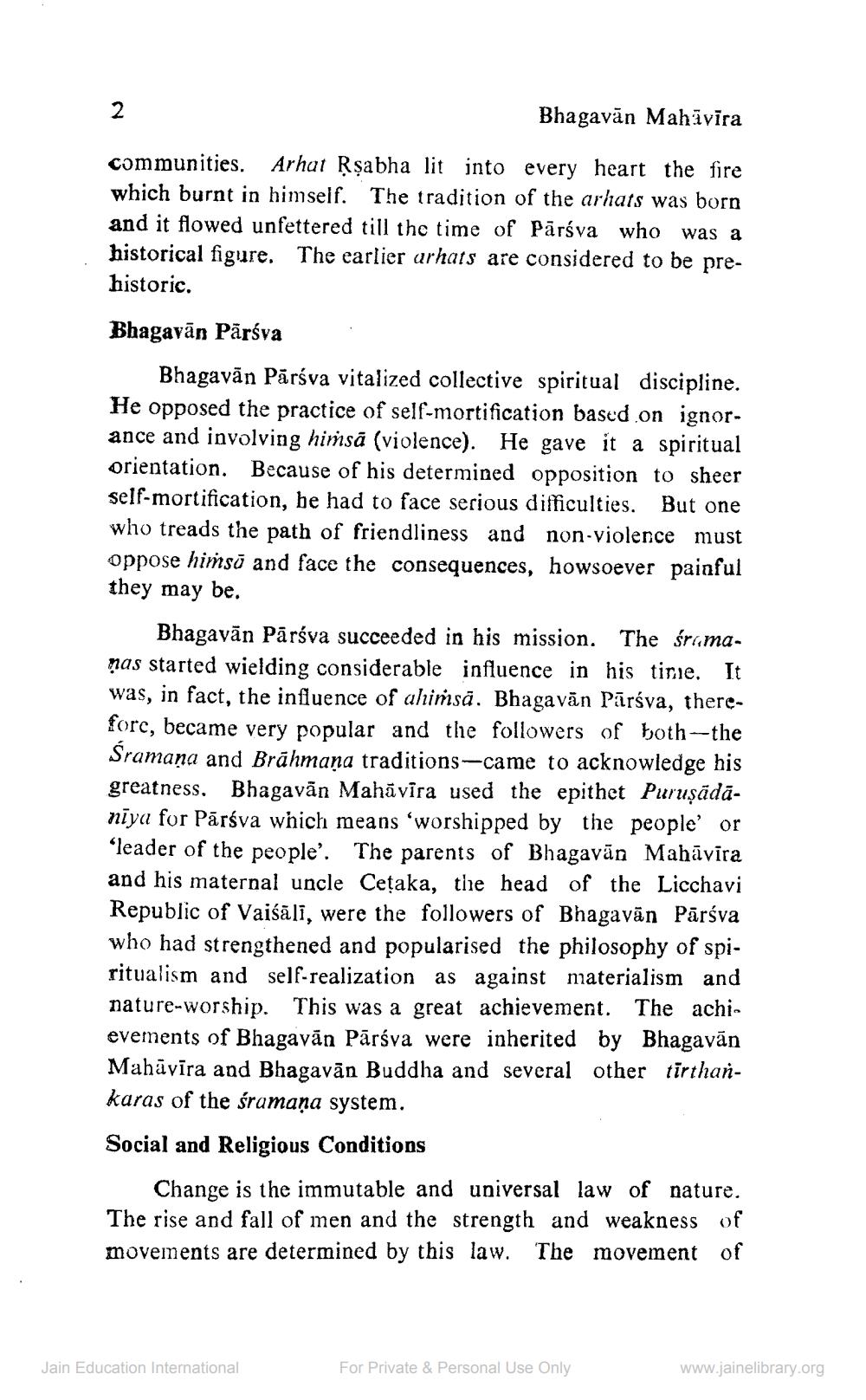________________
2
Bhagavan Mahāvīra
communities.
Arhat Rṣabha lit into every heart the fire which burnt in himself. The tradition of the arhats was born and it flowed unfettered till the time of Pārśva who was a historical figure. The earlier arhats are considered to be prehistoric.
Bhagavan Pārsva
Bhagavan Pārsva vitalized collective spiritual discipline. He opposed the practice of self-mortification based on ignorance and involving himsā (violence). He gave it a spiritual orientation. Because of his determined opposition to sheer self-mortification, he had to face serious difficulties. But one who treads the path of friendliness and non-violence must oppose himsa and face the consequences, howsoever painful they may be.
Bhagavan Parśva succeeded in his mission. The śramanas started wielding considerable influence in his time. It was, in fact, the influence of ahimsa. Bhagavan Pārśva, thereforc, became very popular and the followers of both-the Śramana and Brāhmaṇa traditions-came to acknowledge his greatness. Bhagavan Mahavira used the epithet Puruşādāniya for Pārśva which means 'worshipped by the people' or 'leader of the people'. The parents of Bhagavan Mahāvīra and his maternal uncle Ceṭaka, the head of the Licchavi Republic of Vaiśāli, were the followers of Bhagavan Pārsva who had strengthened and popularised the philosophy of spiritualism and self-realization as against materialism and nature-worship. This was a great achievement. The achievements of Bhagavan Parśva were inherited by Bhagavan Mahāvīra and Bhagavan Buddha and several other tirthankaras of the śramaņa system.
Social and Religious Conditions
Change is the immutable and universal law of nature. The rise and fall of men and the strength and weakness of movements are determined by this law. The movement of
Jain Education International
For Private & Personal Use Only
www.jainelibrary.org




